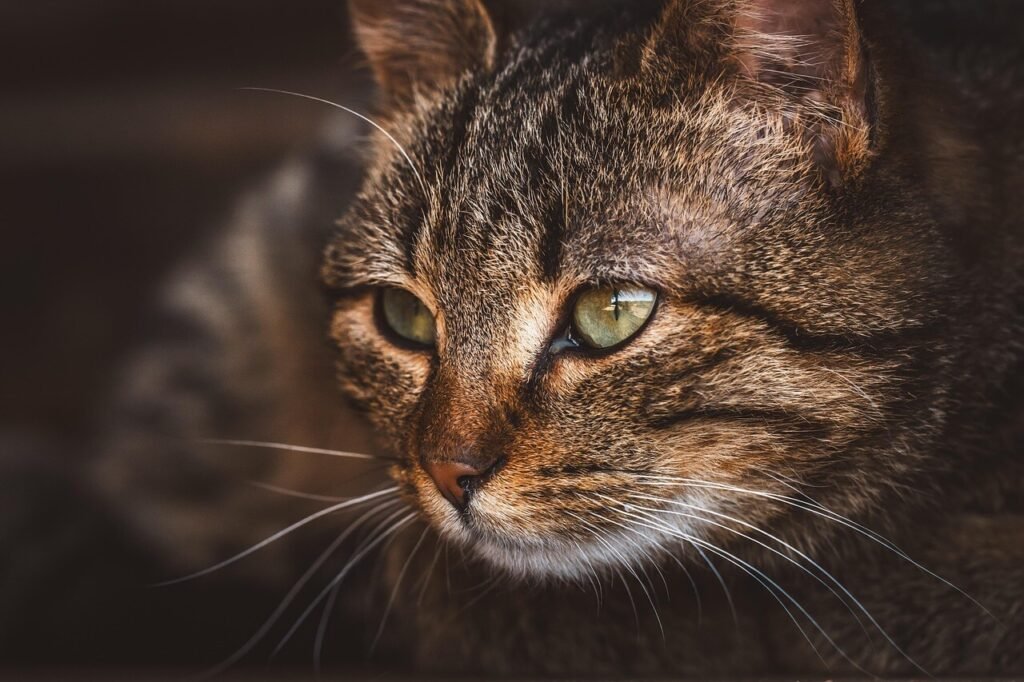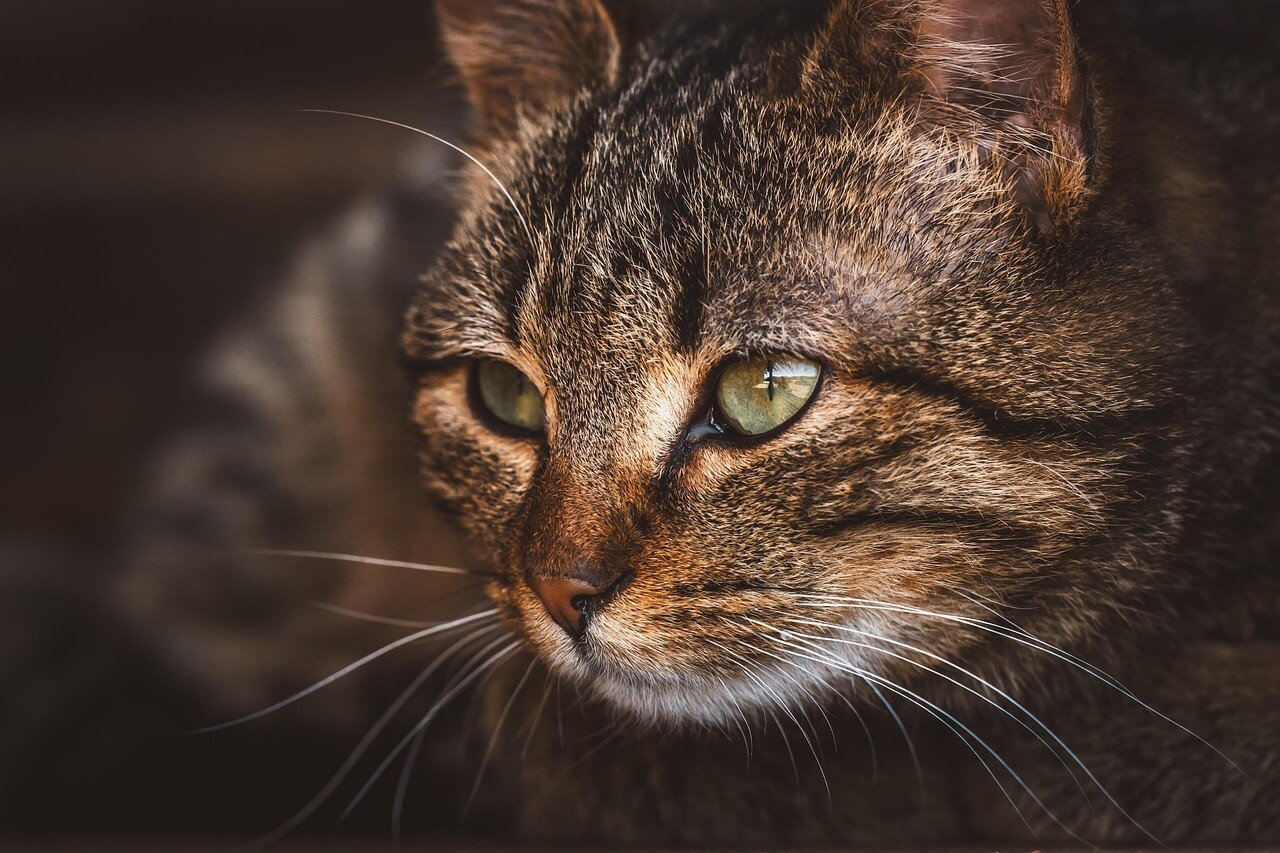Decoding Cat Ear Positions: What Your Feline is Trying to Tell You
Cats are masters of non-verbal communication, and their ears play a significant role in expressing their emotions and intentions. From relaxed lounging to moments of alertness or distress, the position of your cat’s ears can reveal a wealth of information about how they’re feeling. Understanding these subtle cues not only strengthens your bond but also helps you respond appropriately to their needs. Whether you’re a seasoned cat owner or new to feline companionship, learning to interpret cat ear positions will deepen your connection and ensure a harmonious relationship with your furry friend.
What Do Different Cat Ear Positions Mean?
A cat’s ears are incredibly expressive, and their positioning can communicate everything from contentment to fear. Here’s a breakdown of common ear positions and what they signify:
Ears Forward :
When a cat’s ears are pointed forward, it indicates curiosity or interest in something nearby.Ears Upright and Relaxed :
This position suggests that your cat is calm and comfortable in their environment.Ears Slightly Swiveled Back :
A slight backward tilt may signal mild irritation or attentiveness to a sound behind them.Ears Flattened Back :
Flattened ears are a clear sign of fear, aggression, or submission, depending on the context.One Ear Forward, One Back :
This playful or ambivalent position often occurs when your cat is unsure about a situation.
Understanding these positions allows you to gauge your cat’s emotional state and respond accordingly. By paying attention to their ears, you can better meet their needs and avoid misunderstandings.
Interpreting and Reacting to Your Cat’s Ear Language
Knowing what your cat’s ear positions mean is just the first step—responding appropriately is equally important. Here’s how you can react to different ear signals to build trust and comfort:
For Forward Ears :
Engage with your cat by offering toys or treats to satisfy their curiosity.For Relaxed Ears :
Respect their calm state by providing a peaceful environment without interruptions.For Slightly Swiveled Ears :
Observe what might be causing their reaction and remove potential stressors if possible.For Flattened Ears :
Give your cat space and avoid direct interaction until they feel safe again.For Ambivalent Ears :
Use gentle encouragement to help them feel more secure in uncertain situations.
By responding thoughtfully to your cat’s ear language, you can foster a stronger bond and create a stress-free home environment for your pet.
Check this guide 👉Understanding Cat Ear Hematomas: Best 7 Expert Tips!
Check this guide 👉Understanding Cat Ear Yeast Infections: Best 7 Health Tips!
Check this guide 👉Understanding Cat Ear Polyps: Best 7 Expert Tips!

Ear Position | Emotional State |
|---|---|
Ears Forward | Curious or Focused |
Ears Upright and Relaxed | Calm and Content |
Ears Slightly Swiveled Back | Attentive or Mildly Annoyed |
Ears Flattened Back | Fearful or Aggressive |
One Ear Forward, One Back | Playful or Ambivalent |
Common Mistakes When Reading Cat Ear Positions
While interpreting cat ear positions is helpful, there are some common pitfalls to avoid. Misreading their signals can lead to confusion or unintentional stress for your cat.
Assuming Flattened Ears Always Mean Aggression :
Flattened ears can also indicate fear or submission, so context matters.Ignoring Other Body Language Cues :
Ears alone don’t tell the whole story—consider tail, posture, and vocalizations too.Overlooking Subtle Changes :
Small shifts in ear position can signal significant emotional changes.Misjudging Playful Behavior :
Cats with one ear forward and one back may simply be playful, not confused.Reacting Too Quickly :
Rushing to engage or retreat based solely on ear position can escalate tension.
Avoiding these mistakes ensures you interpret your cat’s ear language accurately and respond in a way that supports their well-being.
Using Ear Position Awareness to Deepen Your Connection
Understanding your cat’s ear positions is more than just decoding their mood—it’s an opportunity to strengthen your bond. Here’s how this awareness can enhance your relationship:
Build Trust :
Respecting your cat’s signals shows them they can rely on you to understand their needs.Prevent Conflicts :
Recognizing signs of discomfort or aggression helps you avoid unnecessary confrontations.Enhance Playtime :
Tailoring activities to your cat’s mood ensures enjoyable and engaging interactions.Provide Comfort :
Knowing when your cat feels stressed allows you to offer reassurance and support.Improve Communication :
Clearer understanding fosters a deeper mutual connection over time.
By using your knowledge of ear positions effectively, you’ll create a happier, healthier dynamic with your feline companion.
How Ear Positions Can Indicate Potential Health Problems
While ear positions often reflect emotions, they can also signal underlying health issues. Being aware of these signs allows you to address potential problems early and ensure your cat stays healthy.
Ears Twitching Frequently :
Persistent twitching may indicate irritation, mites, or an ear infection.Ears Held Low and Flat Consistently :
This could be a sign of pain or discomfort unrelated to emotional stress.Redness or Swelling Around the Ears :
Visible inflammation might point to an allergic reaction or infection.Excessive Scratching Near the Ears :
Frequent scratching suggests possible parasites or skin irritation.Unusual Odor from the Ears :
A foul smell often accompanies infections or bacterial overgrowth.
If you notice any of these signs, it’s important to consult your veterinarian promptly. Early intervention can prevent minor issues from escalating into serious conditions.
Using Ear Position Awareness to Boost Your Cat’s Confidence
Understanding your cat’s ear language not only helps you interpret their mood but also empowers you to create a more supportive environment. Here’s how this awareness can boost your cat’s confidence:
Respect Their Boundaries :
Recognizing when your cat feels threatened allows you to give them space and avoid overwhelming them.Encourage Exploration :
When ears are forward, use positive reinforcement to encourage curiosity and exploration.Minimize Stressors :
Identifying stress signals helps you remove or reduce triggers in their environment.Reward Calm Behavior :
Praise or reward your cat when their ears indicate relaxation to reinforce positive states.Create Safe Spaces :
Designate areas where your cat can retreat when they feel uneasy or overwhelmed.
By fostering a safe and supportive atmosphere, you’ll help your cat feel more secure and confident in their surroundings.
Surprising Insights Into the World of Cat Ears
Cat ears are fascinating not just for their communication abilities but also for their unique characteristics. Here are some intriguing facts about your feline friend’s ears that highlight their incredible design.
Cats Have 32 Muscles in Each Ear :
These muscles allow cats to rotate their ears up to 180 degrees for precise sound detection.Ears Help Regulate Body Temperature :
Cats use their ears to dissipate heat, making them more efficient at staying cool.Unique Patterns Inside the Ear :
The inner ear patterns are as unique to each cat as fingerprints are to humans.Superior Hearing Abilities :
Cats can hear higher frequencies than both dogs and humans, making them excellent hunters.Ears Reflect Mood Instantly :
Unlike humans, who rely on facial expressions, cats’ ears provide immediate insight into their emotional state.
These fun facts remind us just how remarkable our feline companions are. Next time you observe your cat’s ears, take a moment to appreciate their complexity and functionality!
Frequently Asked Questions About Cat Ear Positions
Can ear position alone tell me how my cat is feeling?
While ear position is informative, it’s best to consider other body language cues as well.
Why do cats flatten their ears during grooming?
Flattened ears during grooming are normal and help protect their ears from water or debris.
Are certain breeds harder to read based on ear position?
Breeds with folded ears, like Scottish Folds, may require closer observation of other body signals.
What should I do if my cat’s ears are constantly swiveled back?
Consult a vet, as persistent backward ears could indicate pain or chronic stress.
Can ear position help detect illness in cats?
Yes, flattened or tense ears may accompany signs of illness, so monitor closely and seek veterinary advice.
Final Thoughts: Listening to Your Cat Through Their Ears
Understanding the meaning behind your cat’s ear positions is a powerful tool for enhancing communication and strengthening your bond. By observing their subtle cues and responding with care, you can ensure your feline friend feels understood and supported. Remember, every cat is unique, so take the time to learn their individual signals. With patience and attentiveness, you’ll unlock a deeper level of connection and enjoy a lifetime of love and companionship with your cherished pet.
Cat Fever Treatment: Best 7 Expert Tips! Discover expert advice on identifying, managing, and treating fever in cats to ensure their quick recovery and well-being.
Understanding Meloxicam for Cats: Best 7 Expert Tips! Learn how to safely administer meloxicam, manage side effects, and ensure your cat's comfort with expert advice on feline pain relief.
Amoxicillin for Cat UTI: Best 7 Expert Tips! Discover safe usage, dosage guidelines, and expert advice on treating feline urinary tract infections effectively with amoxicillin.
Understanding Cat Cancer Treatment: Best 7 Expert Tips! Discover expert advice on managing feline cancer, from early detection to treatment options, ensuring your cat’s health and comfort.





